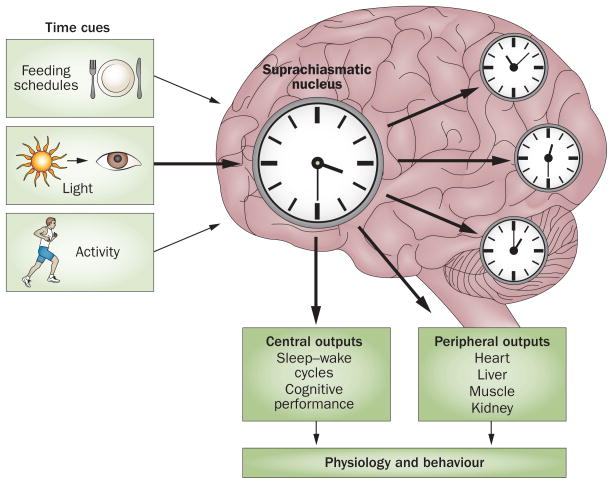Figure 1.
A simplified scheme of the circadian system. The timing of human biological rhythms is synchronized to the rotation of the Earth, and is influenced by numerous external and internal time cues. These stimuli are known as ’zeitgebers’ (German for ‘time giver’). Light is the most important and potent zeitgeber. In addition to light, activity, feeding schedules, and the hormone melatonin also influence circadian timing. This synchronization can become disrupted, which eventually leads to misalignment or internal desynchronization. This loss of coordination of circadian rhythms can have negative consequences for sleep–wake cycles and numerous other biological functions.

